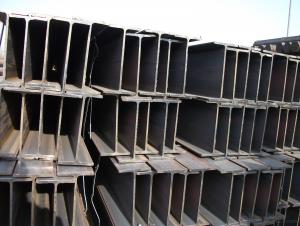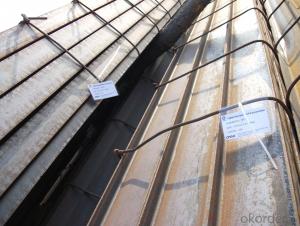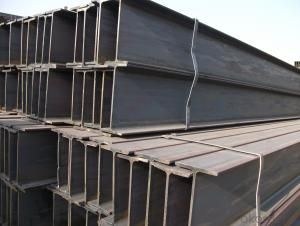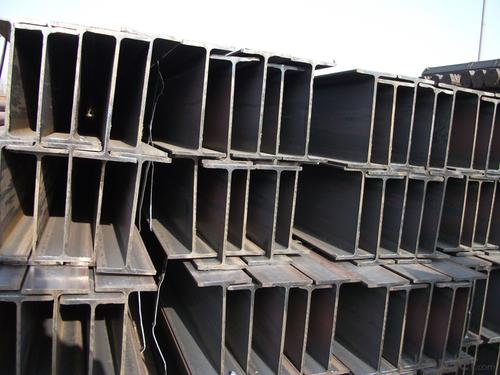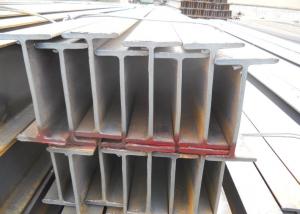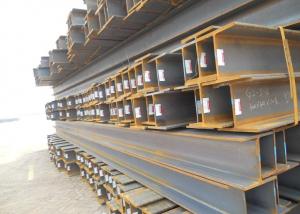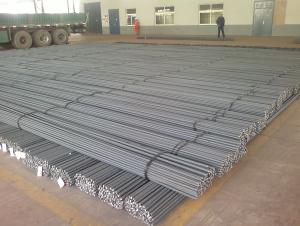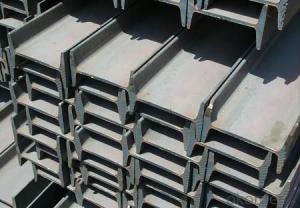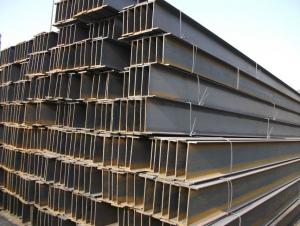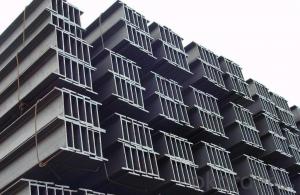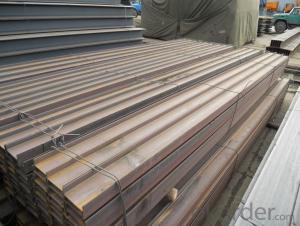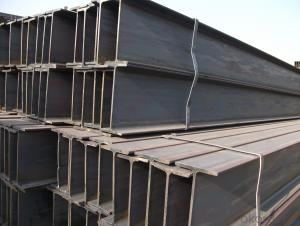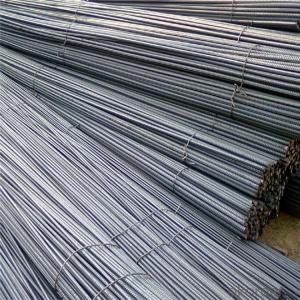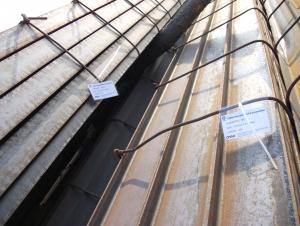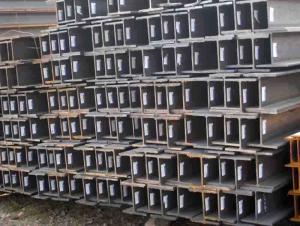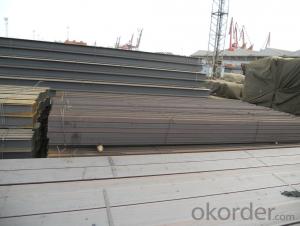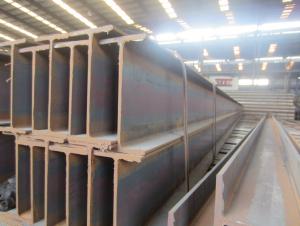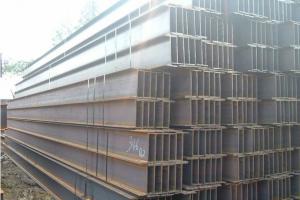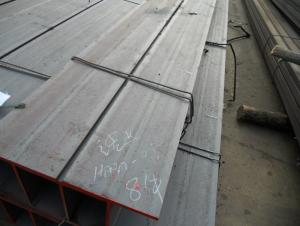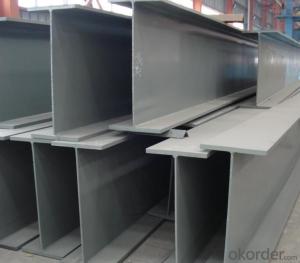H Type Bar Hot Rolled Steel Heb Bar H Iron Beam Steel
- Loading Port:
- Tianjin
- Payment Terms:
- TT or LC
- Min Order Qty:
- 27 m.t.
- Supply Capability:
- 20000 m.t./month
OKorder Service Pledge
OKorder Financial Service
You Might Also Like
Specifications
Hot Rolled Steel Heb Bar
1.Better price
2.Professional service
3.Mass stock
4.Fast delivery
H beam is widely used in various building structure and engineering structure:
a).used for the plant, high-rise building construction
b).used for the bridge, shipment building
c).used for lifting and transportation machinery, equipment manufacturing base building
d).used for the support, foundation pile manufacturing
Detailed description of H beam:
| Shape | H |
| Szie | 100x50x5x7---900x300x15x28,or as per your request |
| Standard (steel H beam) | GB/T3094-2000 GB/T6728-2002 ASTM A500 JIS G 3466 DIN EN 10210 |
| Material | Q195,Q235,Q345, 20#,45#,S235,S355,St37,St52,SS400 |
| Technique | Hot rolled,Cold Rolled,ERW,High-frequency welded,Extruded |
| Certification | CO;FE; MTC |
| Surface | Galvanized,Paint,Oil |
| Length | 5.8m (load into 20' container) 6m 11.8m(load into 40 container) 12m or according to customer's request |
| Uasge | Construction;Building;Ship building; |
| Port of Shipment | Shanghai;Tianjin |
| Main Market | Southeast Aisa;Middle East;Afica |
| Package | Seaworthy packing or according to your request |
| Productitity | 5000 ton per month;20000 ton per season |
| Pls noted | In order to make best quotation, Please kindly indicate length, width, thickness and the standard, material you required |
FAQ:
Q1: Why buy Materials & Equipment from OKorder.com?
A1: All products offered byOKorder.com are carefully selected from China's most reliable manufacturing enterprises. Through its ISO certifications, OKorder.com adheres to the highest standards and a commitment to supply chain safety and customer satisfaction.
Q2: How do we guarantee the quality of our products?
A2: We have established an advanced quality management system which conducts strict quality tests at every step, from raw materials to the final product. At the same time, we provide extensive follow-up service assurances as required.
Q3: How soon can we receive the product after purchase?
A3: Within three days of placing an order, we will begin production. The specific shipping date is dependent upon international and government factors, but is typically 7 to 10 workdays.
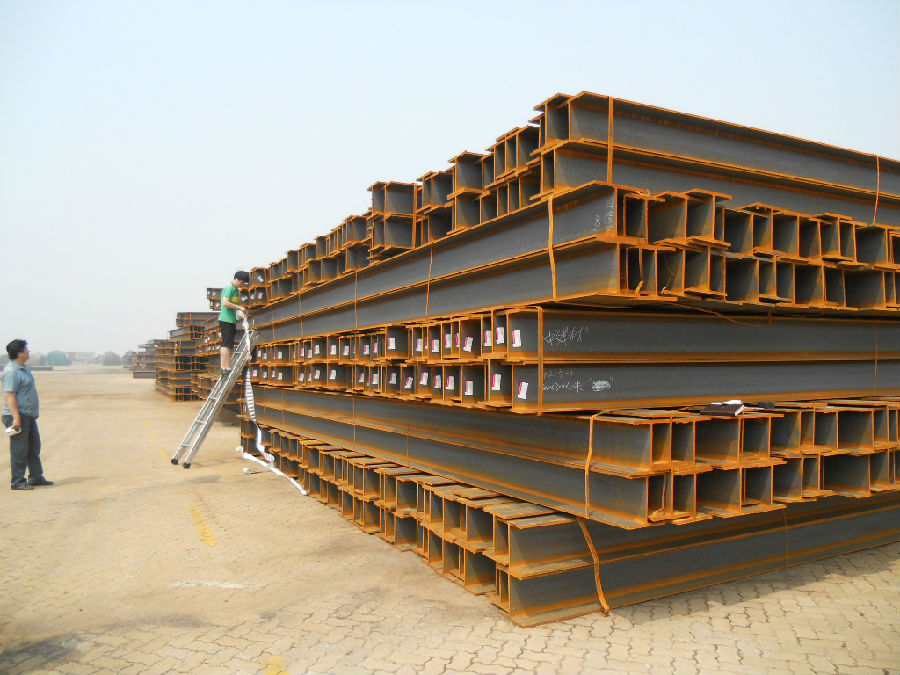
- Q: Are there any environmental benefits to using Steel H-Beams?
- Yes, there are several environmental benefits to using Steel H-Beams. Firstly, steel is a highly durable and long-lasting material, which means that H-Beams made from steel have a longer lifespan compared to other materials. This reduces the need for frequent replacements and decreases the overall environmental impact. Additionally, steel is a highly recyclable material, and H-Beams can be easily recycled at the end of their life cycle, reducing the demand for new steel production and conserving natural resources. Moreover, steel H-Beams have a high strength-to-weight ratio, allowing for the construction of lighter and more efficient structures, which reduces the amount of material required and lowers energy consumption during transportation and construction. Overall, the use of steel H-Beams contributes to sustainable construction practices and helps mitigate environmental impact.
- Q: How do steel H-beams perform in extreme weather conditions?
- Steel H-beams are known for their exceptional strength and durability, which make them suitable for a wide range of applications, including construction and engineering projects. However, it is important to consider how steel H-beams perform in extreme weather conditions. In general, steel is highly resistant to adverse weather conditions such as extreme heat, cold, rain, and wind. H-beams, specifically, are designed to withstand heavy loads and provide structural support, which means they are typically capable of withstanding harsh weather conditions. One key advantage of steel H-beams in extreme weather conditions is their resistance to corrosion. Steel is naturally resistant to rust and deterioration, and proper protective coatings can be applied to enhance its resistance further. This makes steel H-beams a reliable choice even in environments with high humidity or exposure to saltwater. In extreme heat, steel H-beams have a high melting point and can withstand high temperatures without losing their structural integrity. This makes them suitable for areas prone to wildfires or intense heatwaves. Similarly, in cold weather conditions, steel H-beams maintain their strength and stability. They do not become brittle or lose their load-bearing capacity, ensuring the structural integrity of buildings and infrastructure in freezing temperatures. Steel H-beams also fare well in extreme wind conditions. Their sturdy construction and ability to distribute loads effectively make them resistant to strong winds, reducing the risk of structural damage during storms or hurricanes. However, it is essential to note that extreme weather conditions can have various effects on structures, and additional precautions may be necessary depending on the specific circumstances. Factors such as design, quality of materials used, and proper maintenance play crucial roles in ensuring the performance of steel H-beams in extreme weather conditions. Overall, steel H-beams are generally well-suited for extreme weather conditions due to their strength, durability, and resistance to corrosion. Nevertheless, it is always recommended to consult with structural engineers and follow proper guidelines to ensure the safety and longevity of any structure in such conditions.
- Q: Can steel H-beams be used in curved or arched structures?
- No, steel H-beams are not typically used in curved or arched structures. These beams are designed to resist bending forces in a straight line and are not well-suited for curved or arched configurations. In such cases, other structural elements like curved steel beams or trusses are more commonly used to accommodate the desired shape.
- Q: What are the considerations when designing for acoustical isolation of Steel H-Beams?
- When designing for acoustical isolation of Steel H-Beams, there are several important considerations that need to be taken into account. Firstly, the mass of the steel beams plays a significant role in determining the level of acoustical isolation. Heavier beams tend to have better sound insulation properties due to their increased mass, which helps to absorb and block sound waves. Therefore, it is crucial to select the appropriate size and weight of H-Beams to achieve the desired level of acoustic isolation. Secondly, the structural design of the H-Beams can impact acoustical isolation. The shape and dimensions of the beams, as well as their connection details, need to be carefully designed to minimize sound transmission. Special attention should be paid to any potential flanking paths, where sound can travel through alternate routes such as wall cavities or other structural elements. These flanking paths should be identified and effectively addressed to ensure optimal acoustical isolation. Additionally, the use of appropriate insulation materials is essential for enhancing acoustical isolation. Insulation materials, such as resilient pads or rubber gaskets, can be placed between the steel beams and adjacent elements to reduce the transfer of sound vibrations. The selection and installation of these materials should be done in accordance with industry standards and guidelines to achieve maximum effectiveness. Moreover, the overall construction and assembly process should be carefully managed to avoid any compromises to acoustical isolation. Proper sealing and caulking of joints and connections between the steel beams and other building components are critical to prevent sound leakage. Attention should also be given to the installation of any penetrations through the steel beams, such as pipes or conduits, as these can create weak points for sound transmission if not properly addressed. Lastly, it is important to consider the specific requirements and regulations for acoustical isolation in the intended application or building. Different industries and building codes may have specific standards or criteria that need to be met. Consulting with acoustical engineers or specialists can provide valuable insights and guidance in ensuring compliance with the necessary acoustic isolation requirements. In conclusion, designing for acoustical isolation of Steel H-Beams involves considering factors such as mass, structural design, insulation materials, construction processes, and regulatory requirements. By carefully addressing these considerations, optimal acoustical isolation can be achieved, minimizing sound transmission and enhancing the overall acoustic performance of the building or structure.
- Q: How are steel H-beams transported and stored?
- In order to ensure the safety and ease of handling, steel H-beams, which are highly valued in the construction industry for their strength and durability, are transported and stored in a specific manner. During transportation, it is common practice to load steel H-beams onto flatbed trucks or trailers. To prevent any movement or shifting during transit, chains or straps are used to secure them. It is of utmost importance to evenly distribute the weight and ensure proper balance on the truck to avoid any potential accidents or damage to the beams. When it comes to storage, steel H-beams are typically stored horizontally in designated areas such as warehouses or construction sites. They are often stacked on steel racks or placed on the ground in order to prevent contact with the ground, which could lead to corrosion. To shield the H-beams from environmental elements such as rain, snow, or excessive sunlight, it is customary to cover them with a tarp or store them indoors. This precautionary measure effectively prevents rust and deterioration that could compromise the beams' structural integrity. Moreover, careful attention is given to the storage layout to ensure accessibility and easy retrieval. H-beams are typically organized based on their size and weight, and proper labeling or identification is employed to facilitate quick identification and retrieval when necessary. The proper handling and storage of steel H-beams play a vital role in maintaining their structural integrity and preventing any damage that could hinder their performance in construction projects. By adhering to these guidelines, the beams can be transported and stored safely, thereby enabling efficient construction processes and the creation of long-lasting structures.
- Q: What are the different types of steel H-beam connections for blast-resistant buildings?
- There are several different types of steel H-beam connections that can be used in blast-resistant buildings. These connections are specifically designed to withstand the dynamic forces generated by explosive blasts and provide structural stability to the building. Some of the commonly used types of steel H-beam connections for blast-resistant buildings include: 1. Welded Connections: Welded connections are the most common type of connection used in blast-resistant buildings. These connections are created by welding the H-beam to other structural members or plates. Welded connections provide excellent strength and rigidity, making them suitable for withstanding blast forces. 2. Bolted Connections: Bolted connections involve using bolts and nuts to connect the H-beam to other structural elements. Bolted connections are easy to assemble and disassemble, allowing for flexibility in construction and maintenance. However, they may not be as strong as welded connections and may require additional reinforcement to withstand blast forces. 3. Moment Connections: Moment connections are designed to transfer both vertical and horizontal loads between the H-beam and other structural members. These connections provide high resistance to bending moments and are commonly used in blast-resistant buildings to ensure structural integrity during an explosion. 4. Gusset Plate Connections: Gusset plate connections involve using a steel plate to connect the H-beam to other structural elements. The gusset plate is typically welded or bolted to the H-beam and provides additional strength and stability to the connection. This type of connection is often used in blast-resistant buildings to enhance the load-bearing capacity and resistance to blast forces. 5. Shear Connections: Shear connections are designed to resist the horizontal forces acting on the H-beam. These connections transfer the shear forces between the H-beam and other structural components, ensuring the stability and integrity of the building during a blast event. It is important to note that the specific type of steel H-beam connection used in a blast-resistant building depends on various factors, including the design requirements, load conditions, and blast resistance criteria. Consulting with structural engineers and blast-resistant design specialists is crucial to determine the most appropriate type of connection for a particular project.
- Q: H steel compared with ordinary steel in the end what are the advantages and disadvantages?
- The flanges of H steel are all of equal thickness, there is a rolling cross section, and there is a combined section composed of 3 plates welded together. I-beam is a rolling cross section, due to poor production process, flange within the edge of the 1:10 slope. H type steel rolling is different from ordinary I-beam with only one set of horizontal roll, because of its wide flange and no inclination (or inclination is to be very small), a group of vertical roll and roll, therefore, the rolling process and equipment than the conventional mill complex. The maximum rolled H steel produced in China can be 800mm high and can only be welded composite sections.
- Q: Can steel H-beams be used for supporting greenhouses or agricultural tunnels?
- Yes, steel H-beams can be used for supporting greenhouses or agricultural tunnels. They are commonly used in construction due to their strength and durability, making them suitable for providing structural support in these applications.
- Q: What are the different sizes of steel H-beams available in the market?
- The different sizes of steel H-beams available in the market vary greatly, ranging from small sizes like 100x100mm to larger sizes like 1000x300mm. The exact sizes available may differ depending on the manufacturer and supplier.
- Q: Can steel H-beams be used for agricultural storage buildings?
- Agricultural storage buildings can indeed utilize steel H-beams. These beams are widely employed in construction due to their durability and strength. They offer exceptional support and load-bearing capabilities, making them an ideal choice for storing heavy agricultural products, machinery, or equipment. Moreover, steel H-beams possess resistance against pests, fire, and adverse weather conditions, rendering them a reliable option for agricultural storage buildings. Nevertheless, it is crucial to consider various factors such as building size, design, local building codes, and specific requirements for the storage facility. Consulting a structural engineer or construction professional can ensure that the steel H-beams align with the precise needs and demands of the agricultural storage structure.
Send your message to us
H Type Bar Hot Rolled Steel Heb Bar H Iron Beam Steel
- Loading Port:
- Tianjin
- Payment Terms:
- TT or LC
- Min Order Qty:
- 27 m.t.
- Supply Capability:
- 20000 m.t./month
OKorder Service Pledge
OKorder Financial Service
Similar products
Hot products
Hot Searches
Related keywords
